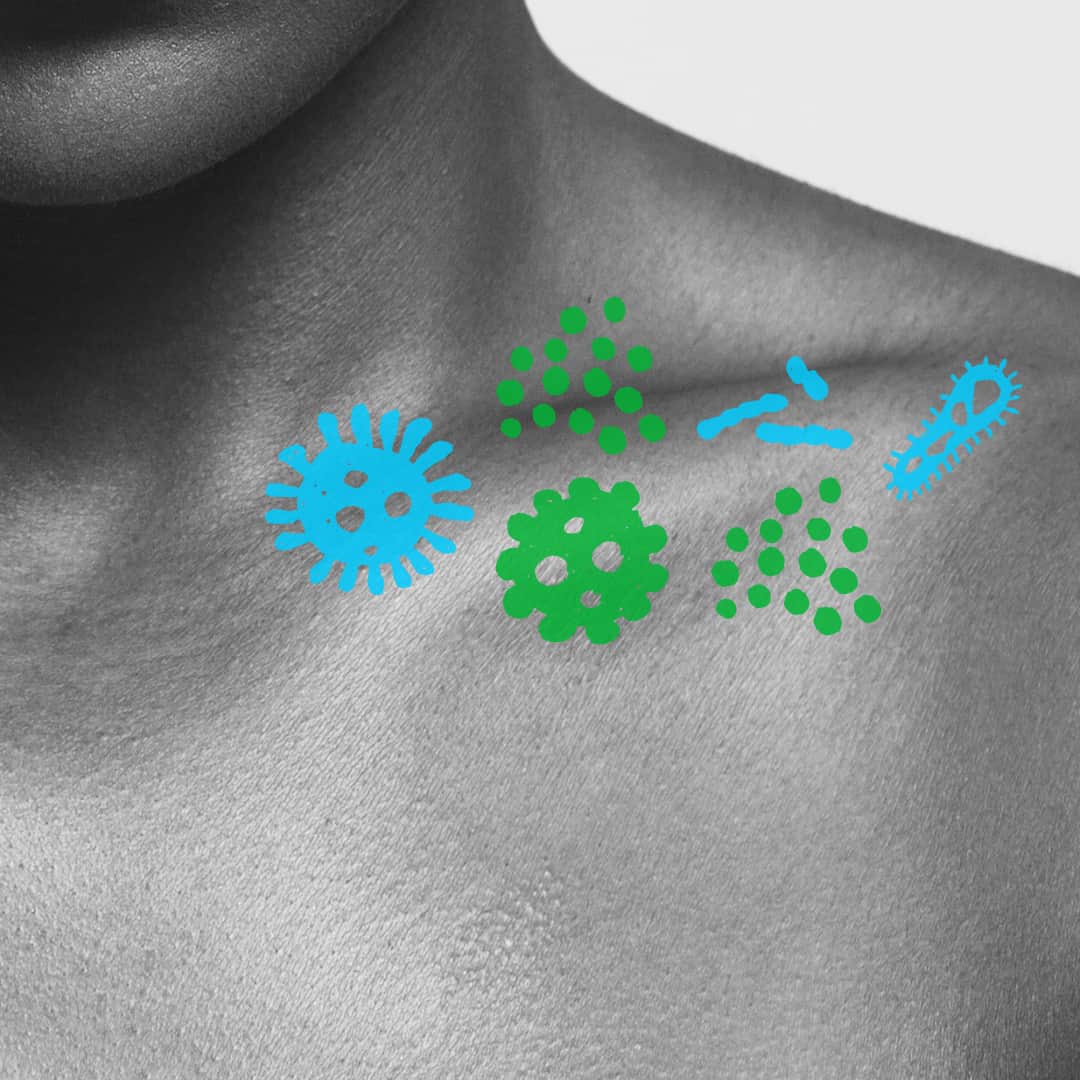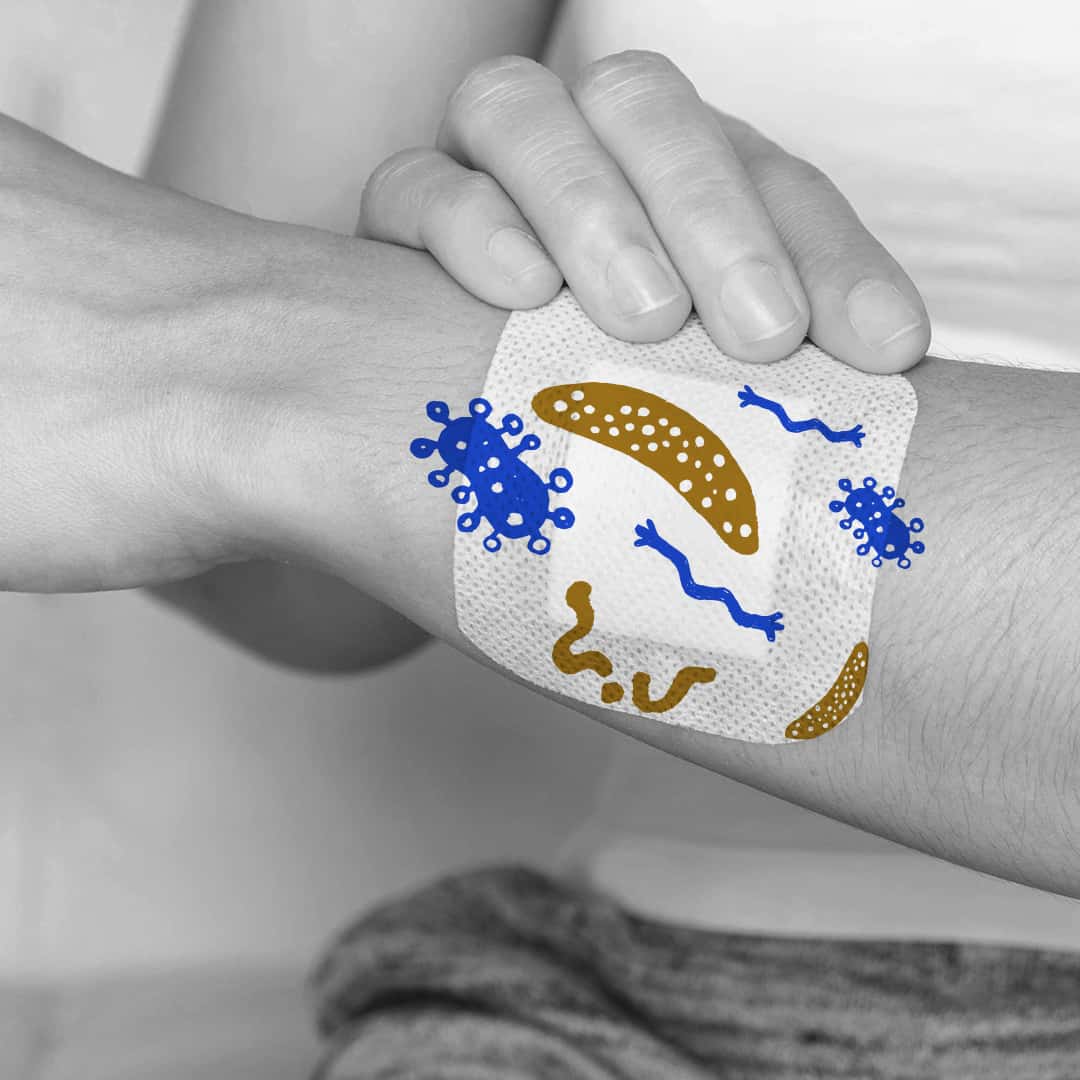The potential power of unlocking the secrets of the skin microbiome are vast, both for healthy skin and for those that have specific skin conditions. Yet, with all new developments comes a learning curve. So today, we are taking a step back and busting 5 of the most common myths. (Spoiler alert: some of the truths we touch upon are thanks to the evolving research into the skin microbiome.)
Myth #1:
Bacteria on the skin are bad

We couldn’t do a myth-busting series without covering off the ultimate myth about microbes. Previously, the belief that bacteria caused skin ‘problems’ was well entrenched within our mindsets – thus the use of harsher exfoliants and products. We now know that this is, of course, not true.
Microbes can be both good and bad with a multitude of factors impacting the role of the bacteria on our skin. An example is S. aureus – a bacteria that colonizes much of the global population without causing any issues but is also central to the development of atopic dermatitis as well as more serious conditions, such as sepsis linked to resistant variations (MRSA) [1].
Myth #2:
Natural and organic ingredients are better for your skin than synthetic chemicals

This is one of the most persistent myths that we see around skin care and our health more generally. We have teamed up with chemistry PhD and science educator Michelle Wong to tackle this one!
So, first things first, let’s remind ourselves that everything you can breathe, see, ingest or touch is made up of chemicals, including you! We are surrounded by them. Our ‘natural’ environment is composed primarily of the chemical elements O2, N2, Ar and CO2 – otherwise known as oxygen, nitrogen, argon and carbon dioxide.
There really is no such thing as a chemical-free product. We must also remember than naturally occurring substances can be both good and bad for the skin: sunflower oil versus poison ivy.
Ingredients that are found naturally can often also be made synthetically for skincare products for a myriad of reasons; to maximise its beneficial qualities, make the product more accessible and also, importantly, more sustainable or pure. Salicylic acid originates from willow bark, but it is also manufactured synthetically to create the same molecule.
Let’s not also forget that synthetic products can be created that are informed by nature, even if not mimicking the exact processes of nature. Many products that are created in response to skin microbiome research are based on naturally occurring bacterial products and developers aim to create targeted interventions to rectify dysbiosis of the microbiome.
Myth #3:
Cutibacterium acnes is the bacteria behind acne
There are many myths that surround acne: it’s linked to poor hygiene; it only occurs during the teenage years; and even its just a sign of a few too many sweet treats!
While many sources have linked C. acnes to its development, the truth is that we still do not truly understand what causes it and, in many cases, C. acnes exists on the skin without causing any skin issues – see myth #1 [2]!
Acne is a hot topic in skin research which has led to the identification of potentially pathogenic strains and subtypes of C. acnes. However, due to the multifaceted nature of the condition and the dynamic nature of the skin and its microbiome, we are currently unable to pinpoint just one cause of acne. Thus, we cannot generalise and say that C. acnes is the root cause. What we do know is that it is likely that a combination of factors, including lifestyle and genetics, play a role in the development and severity of acne.
Myth #4:
Microbes outnumber human cells by 10:1
For a long time, this data point was thought to be true. Indeed, even now, this figure is often quoted. A 2016 study [3] busted this myth, finding that a more accurate ratio of bacteria to human cells is 1.3:1 in an average male. This is still 38 trillion bacteria to an estimated 30 trillion human cells!
Interestingly, while the skin may by the largest human organ (by area), less than 0.5% of our bacteria live there. This is still a mind-boggling 180 billion microbes.
Myth #5:
The skin microbiome is a barrier and key part of our immune system

Our final myth, bought to you from Rosie Broadhead, is partly true and partly false. The skin is a biological surface between the self and the world. Its complex exterior and semi- permeable membrane interact with our biology and the environment. The semi-permeable nature of our skin has an important role that allows host-microbe interactions and coordinates the function of our whole body.
We now know [4] that healthy skin depends on the commensal microbes that live on and in our bodies. These ‘healthy’ microbes constitute our bodies’ first line of defence against those that are pathogenic (harmful). They create an environment which enables the skin to be less susceptible to disease and pathogenic bacteria and alterations to our skin microbiome are associated with a range of skin disorders. However, the microbiome itself isn’t a part of our immune system but, rather, interacts with it to cause or prevent an immune response.
For example, certain bacteria commonly found on the skin have been shown to inhibit inflammation, and have prebiotic and probiotic functions, much like the gut microbiome. These recent findings suggest a complex interplay between our skin’s immune system and the microbiome. The skin microbiome isn’t just a barrier to the outside world but can also play a role in both healthy and diseased states.
References:
[1] https://thesecretlifeofskin.com/2019/06/11/the-jekyll-and-hyde-skin-microbiome/
[2] https://thesecretlifeofskin.com/2020/06/26/acne-back-to-basics/
[3] Sender, Fuchs and Milo, 2016
